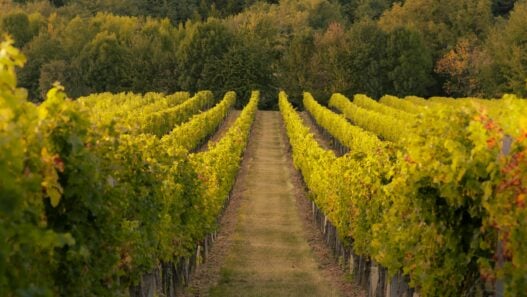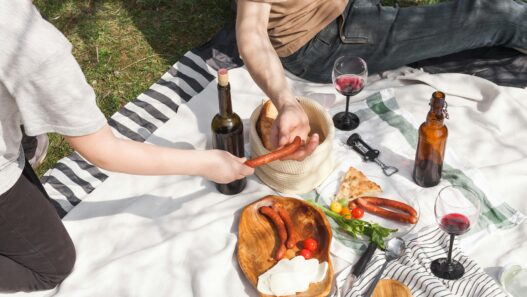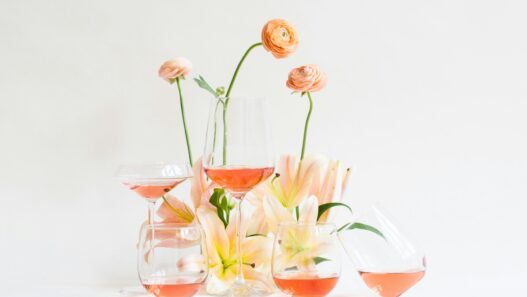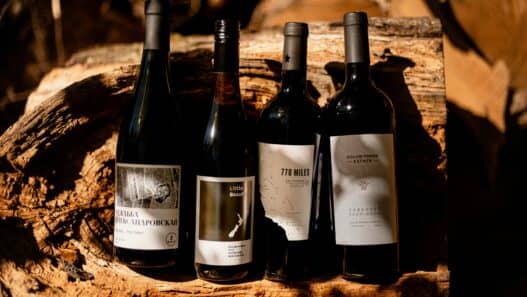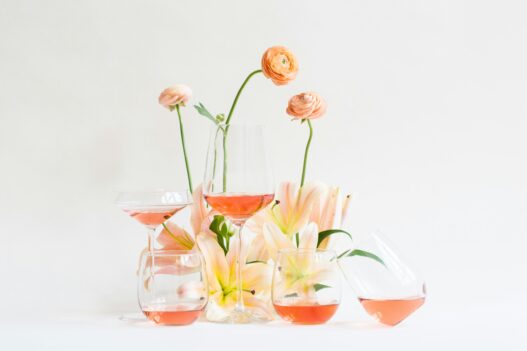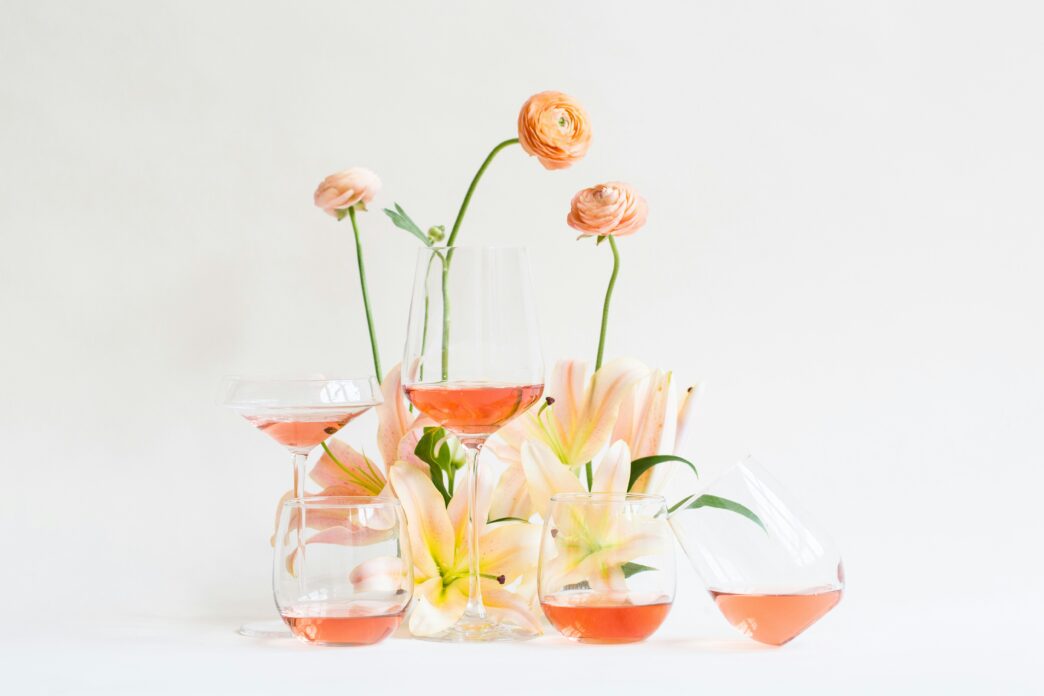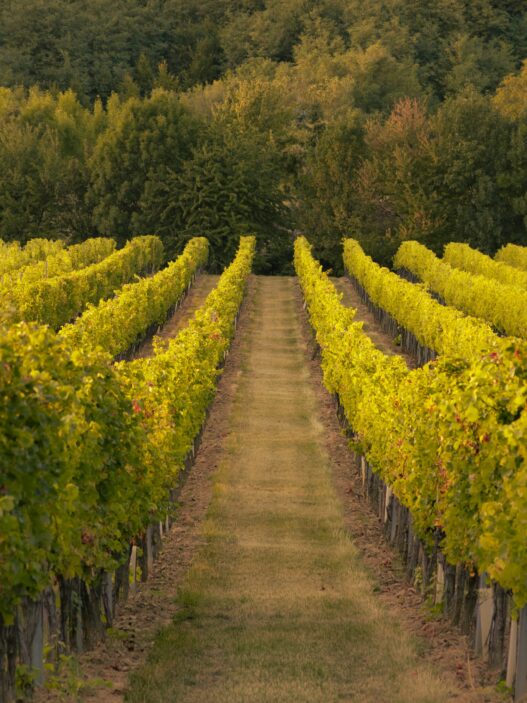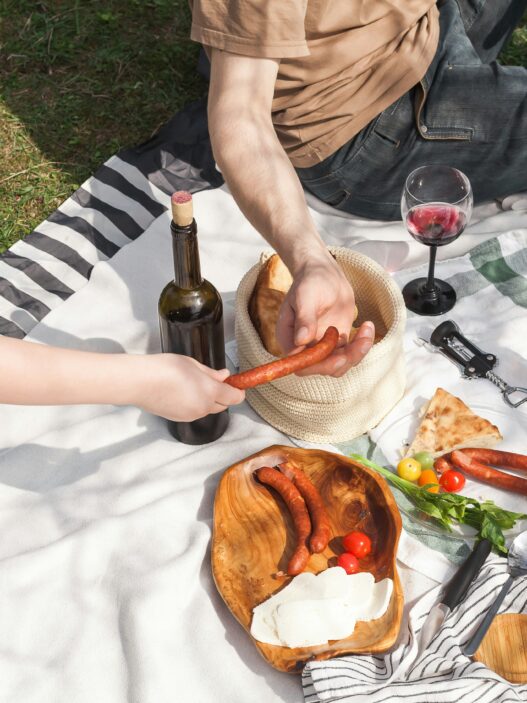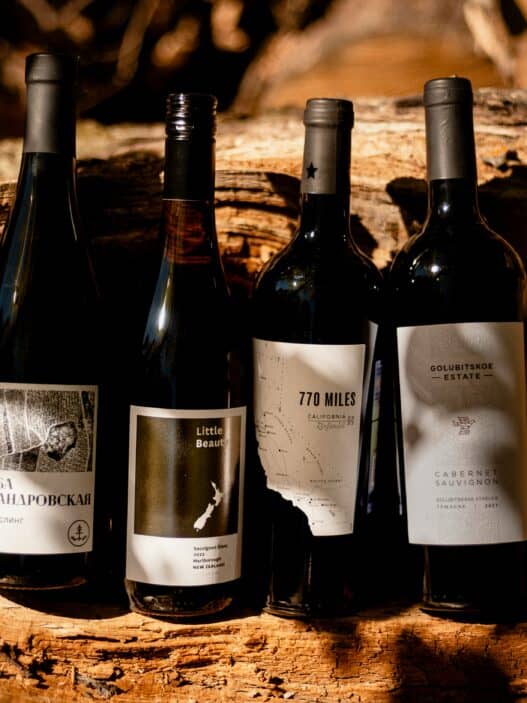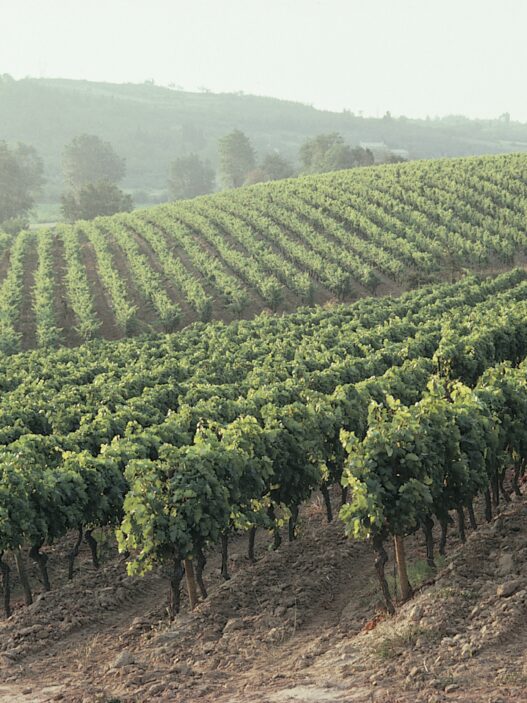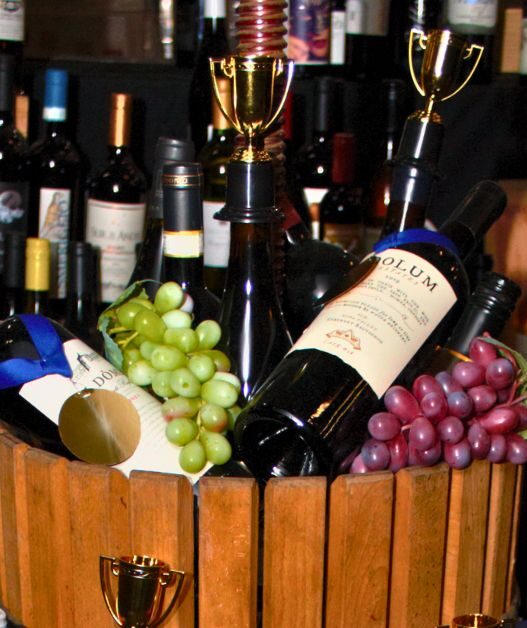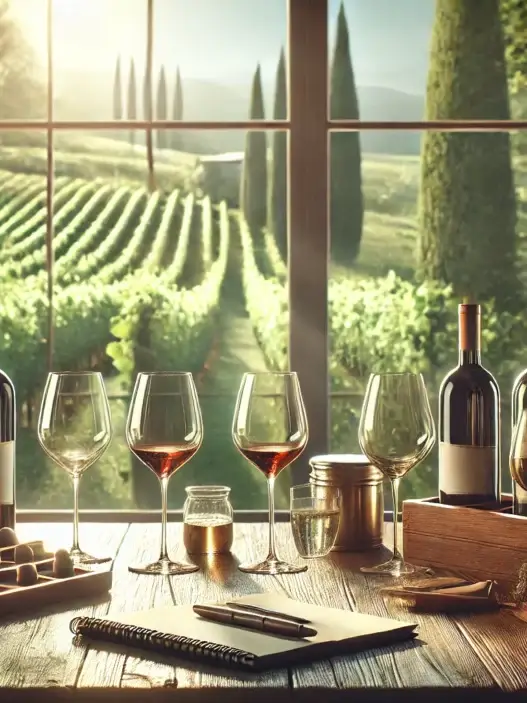For decades, wine lovers have instinctively reached for either red or white. There’s almost nothing that beats a crisp white wine on a hot summer day or with fish, or a bold red paired with a steak. To a lesser extent, blush or Rosé has been popular among casual wine drinkers. However, in recent years, we’ve seen rosé and orange wines—once niche and overlooked—take center stage in the global wine conversation.
These vibrant, often misunderstood styles offer not only a feast for the eyes but also a refreshing complexity that challenges traditional wine boundaries. A lot is happening behind the scenes with both of these curious wine colors. Taking a moment to understand rosé and orange wines may open up a world of flavor, history, and cool wines for you.
What Is Rosé Wine?
Rosé wine, often associated with summer sipping and sunset hues, is made from red grapes using a unique production technique that limits skin contact. The skins of red grapes are left in contact with the juice for a short period—anywhere from a few hours to a couple of days—just long enough to impart a blush of color and a touch of tannin without the full body of a red wine.
Key Styles of Rosé:
- Provence Rosé (France) – Pale pink, dry, and delicate, with notes of strawberry, citrus, and herbs.
- Spanish Rosado – Often deeper in color and richer in flavor, made from grapes like Garnacha and Tempranillo.
- American Rosé – A wide range of styles, from bone-dry to fruit-forward, made from everything from Pinot Noir to Zinfandel.
Flavor Profile: Expect flavors like fresh berries, watermelon, citrus zest, and floral notes. Rosés are typically light to medium-bodied, with refreshing acidity and minimal tannins.
Best With: Light fare—think grilled vegetables, seafood, charcuterie, or simply a sunny afternoon.
What Is Orange Wine?
Despite the name, orange wine isn’t made from oranges. It’s a white wine made like a red, meaning the grape skins are left in contact with the juice for days, weeks, or even months. This ancient technique, revived by natural and biodynamic winemakers, results in a wine that’s amber-hued, textural, and often wildly expressive.
Key Regions for Orange Wine:
- Georgia (the country) – The spiritual home of orange wine, where traditional qvevri fermentation has been practiced for millennia.
- Friuli-Venezia Giulia (Italy) – Known for structured, skin-contact whites from native grapes like Ribolla Gialla.
- Slovenia and Austria – Producing elegant and often more modern interpretations of the style.
Flavor Profile: Orange wines can be earthy, nutty, and savory, with flavors of dried apricots, orange peel, tea, herbs, and spice. The extended skin contact also adds tannins and a grippy mouthfeel rarely found in white wines.
Best With: Hearty dishes like roasted poultry, Middle Eastern cuisine, aged cheeses, and fermented foods.
How They Compare
| Wine Style | Made From | Skin Contact | Tannins | Common Flavors | Food Pairings |
|---|---|---|---|---|---|
| Rosé 🌸 | Red grapes | Brief | Low | Berries, citrus, floral | Light fare, seafood, salads |
| Orange Wine 🍊 | White grapes | Extended | Medium | Dried fruit, spice, tea | Bold flavors, earthy dishes |
Why They’re Worth Exploring
Rosé and orange wines offer a broader palette of experiences than their red and white counterparts. Rosé invites us to reconsider the idea that pink wines are simplistic or sweet—many are bone-dry, food-friendly, and terroir-expressive. Orange wines challenge our expectations of white wines, introducing texture, depth, and umami in fascinating ways.
They’re also emblematic of a broader wine trend: a return to tradition with an eye toward experimentation, authenticity, and sustainability.
Final Pour
Next time you browse the wine aisle or flip through a restaurant list, skip past the usual red or white and seek out the unexpected. A Provençal rosé or a Georgian orange wine might just become your new favorite bottle.



